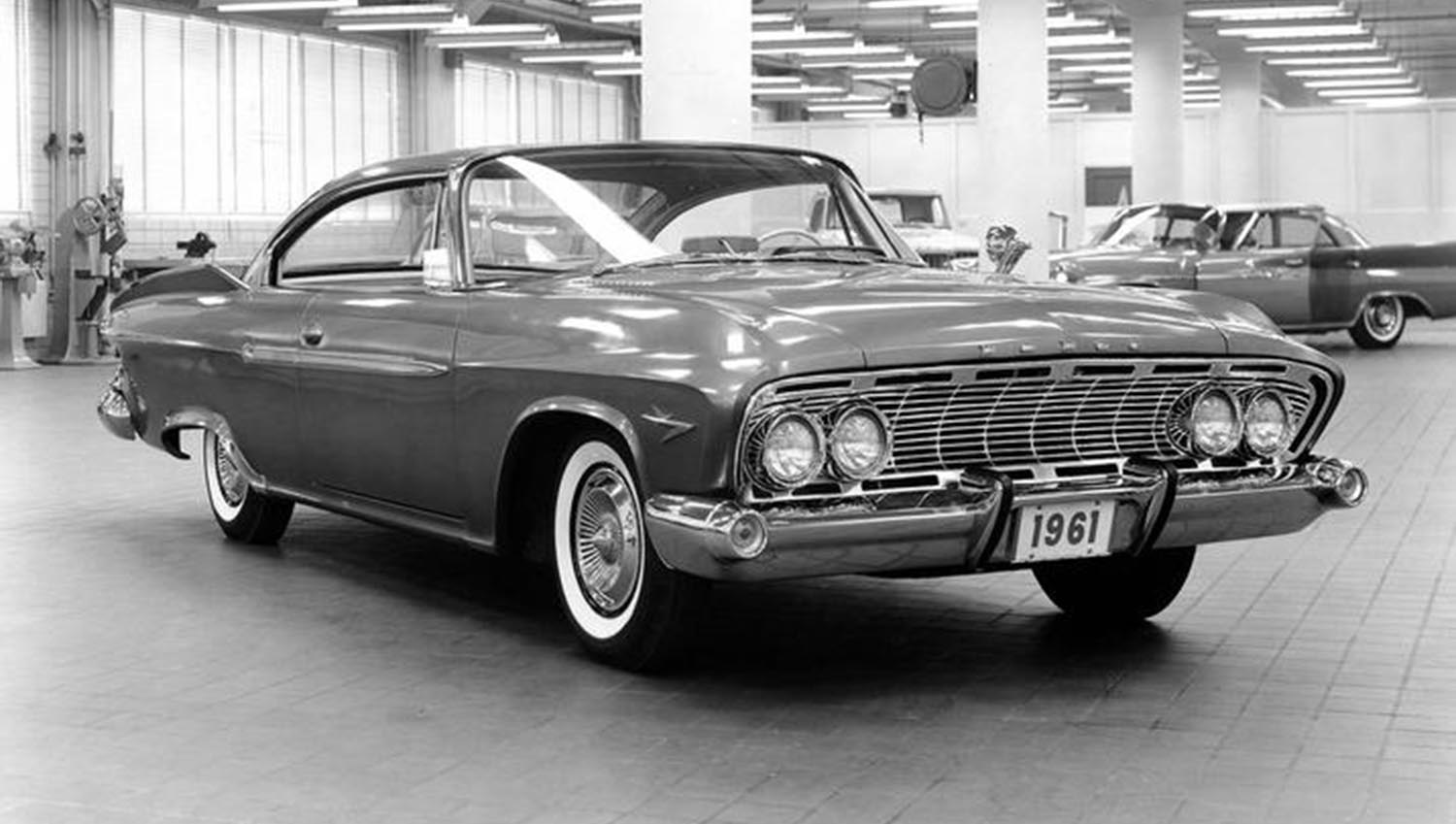
The 1961 model year marked a dramatic, if brief, shift in Dodge’s design strategy. Stepping into the driver’s seat of a 1961 Dodge Dart Phoenix today is like boarding a time machine. This car is a true time capsule of daring mid-century American automotive design. It’s an unforgettable vehicle in a year of significant change for the brand. Its unique styling makes it stand out instantly at any gathering of classic cars. Consequently, this premium Dart variant holds a special, often misunderstood, place in Mopar’s heritage.
The Controversial Vision of Virgil Exner
The history of this particular Dart begins with design chief Virgil Exner. His influence pushed Chrysler Corporation into the controversial “Forward Look” styling. However, by 1961, Exner’s designs had become increasingly radical. The resulting look for the Dart was unlike anything else on the road. Specifically, its dramatic lines and canted tail fins caused a stir. They were an acquired taste for many buyers at the time. This daring approach ultimately led to a decline in sales. Nevertheless, it created an incredibly distinct classic today.
A Full-Size Phoenix, Not a Compact
Many people today associate the Dart name with a compact car. Actually, the 1960 and 1961 Darts were full-size automobiles. Dodge introduced the Dart in 1960 to compete directly with lower-priced offerings from Ford and Chevrolet. The Dodge Dart Phoenix trim represented the top-of-the-line model. It was positioned above the Seneca and Pioneer versions. This gave the Phoenix a level of prestige and luxury.
Unique Exterior Styling Cues
The 1961 refresh gave the Phoenix a striking, polarizing aesthetic. The front fascia featured a concave grille. This design nestled the quad headlights deep within its structure. Furthermore, the sweeping side trim and heavy use of chrome distinguished the top-tier Phoenix. Yet, the rear end is the most defining feature. Here, the sharp, blade-like fins angle outward and forward. This strange look earned it some unfavorable nicknames. However, it completely separates the 1961 model from every other year. Its distinctiveness ensures its status as a one-year styling wonder.
Inside the Jet Age Cockpit
The Phoenix interior matched the exterior’s futuristic vibe. Step inside and you will see the elaborate two-tier dashboard. Moreover, the famous Mopar push-button controls for the automatic transmission sat prominently to the left of the steering column. High-quality vinyl and cloth materials were used throughout the cabin. These luxurious touches enhanced the premium feel of the 1961 Dodge Dart Phoenix. Furthermore, Chrysler continued to innovate with interior technology. Options like the rare swivel front seats added a truly unique touch. They made entry and exit an easier, more entertaining process.
Mechanical Innovations of the 1961 Dodge Dart Phoenix
Under the skin, the Dart utilized Chrysler’s proven engineering. The car featured the new Unibody construction. This gave the car a stiff, sturdy chassis. Additionally, Chrysler pioneered the use of the 12-volt alternator. This replaced the older DC generators across the entire line. However, the torsion bar front suspension was perhaps the most notable feature. This engineering provided a smooth and stable ride.
Performance: The Hidden Power of the Phoenix
The Phoenix came standard with the 225 cubic-inch Slant Six engine. This inline-six was celebrated for its reliability. Importantly, the true performance lay in the optional V8 engines. The 318 cubic-inch V8 provided 230 horsepower. However, the more desirable choice was the 383 cubic-inch big-block. This engine, especially with the D-500 performance package, offered a significant boost. The D-500 utilized a ‘Cross Ram’ induction system. This setup included dual four-barrel carburetors. Consequently, the output could reach an impressive 330 horsepower. These power levels allowed the big 1961 Dodge Dart Phoenix to move swiftly. Such cars are highly valued by collectors today.
The Legacy of a Short Run
The 1961 Dart Phoenix remains a bold testament to automotive risk-taking. It quickly disappeared, as Dodge downsized the Dart for 1962. Ultimately, its short, two-year full-size run defines its legacy. The striking styling and strong performance options made a lasting impact. Today, the 1961 Dodge Dart Phoenix is a recognized and celebrated classic. It is a genuine icon of a time when designers pushed boundaries fearlessly.
The 1961 Dodge Dart Phoenix thus stands as more than just a car; it is a piece of art. It perfectly captures the flamboyant spirit of the early 1960s. This model proved that taking risks in design can pay off for future appreciation. Its unique features and powerful engine options solidified its status. The Phoenix remains a treasured and unusual piece of Mopar history for collectors worldwide.
Disclaimer: Content on this site is for informational purposes only. Vehicle specs, pricing, and availability may change. Always verify details with official sources before making decisions. Opinions are those of the authors.
Source: Stellantis
